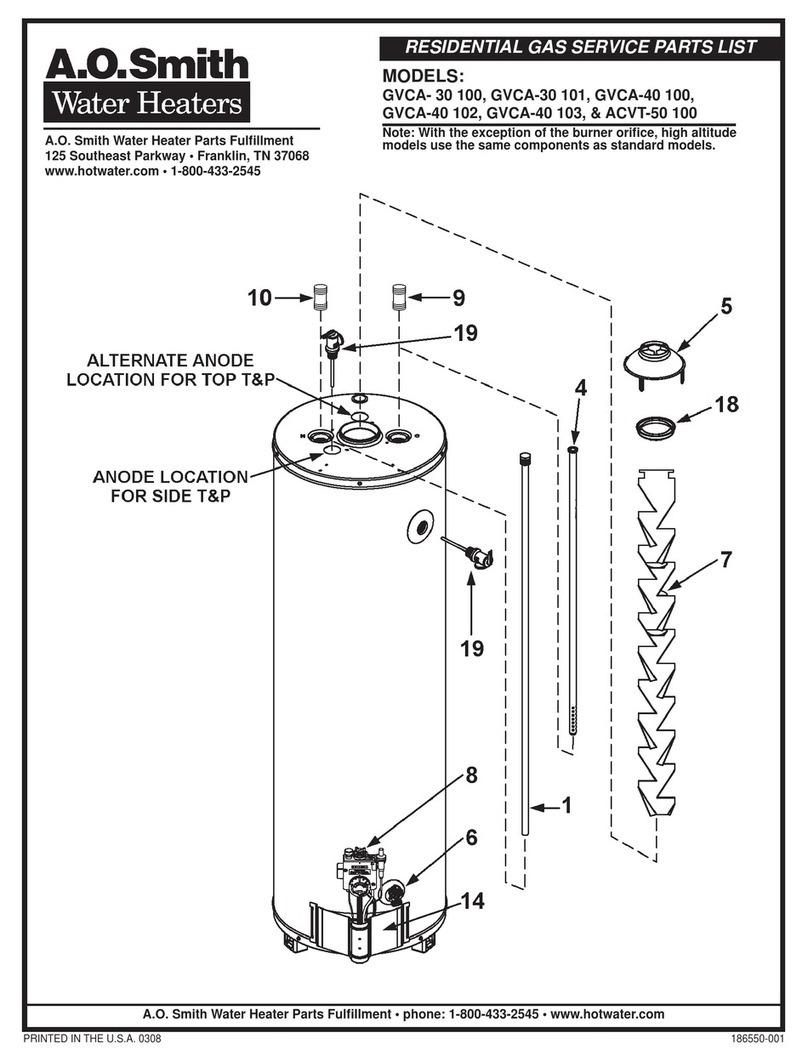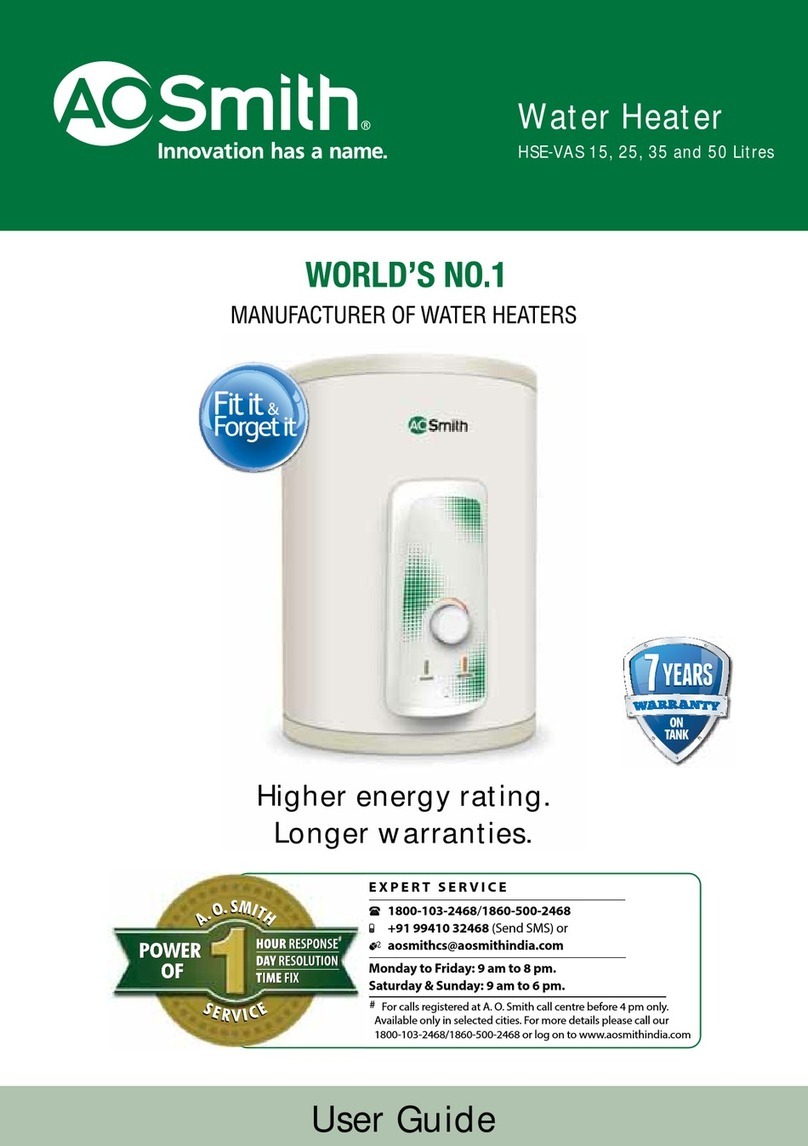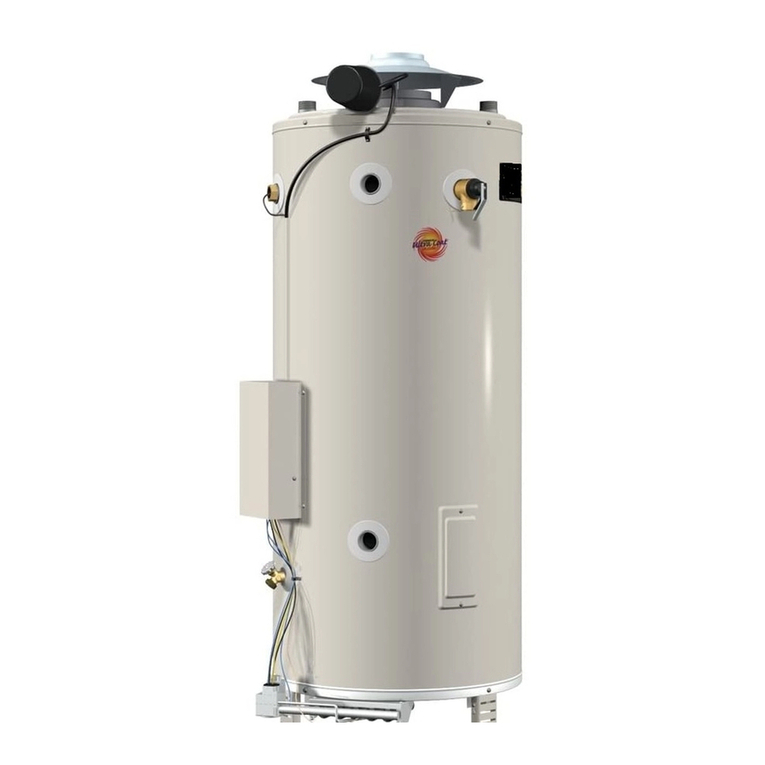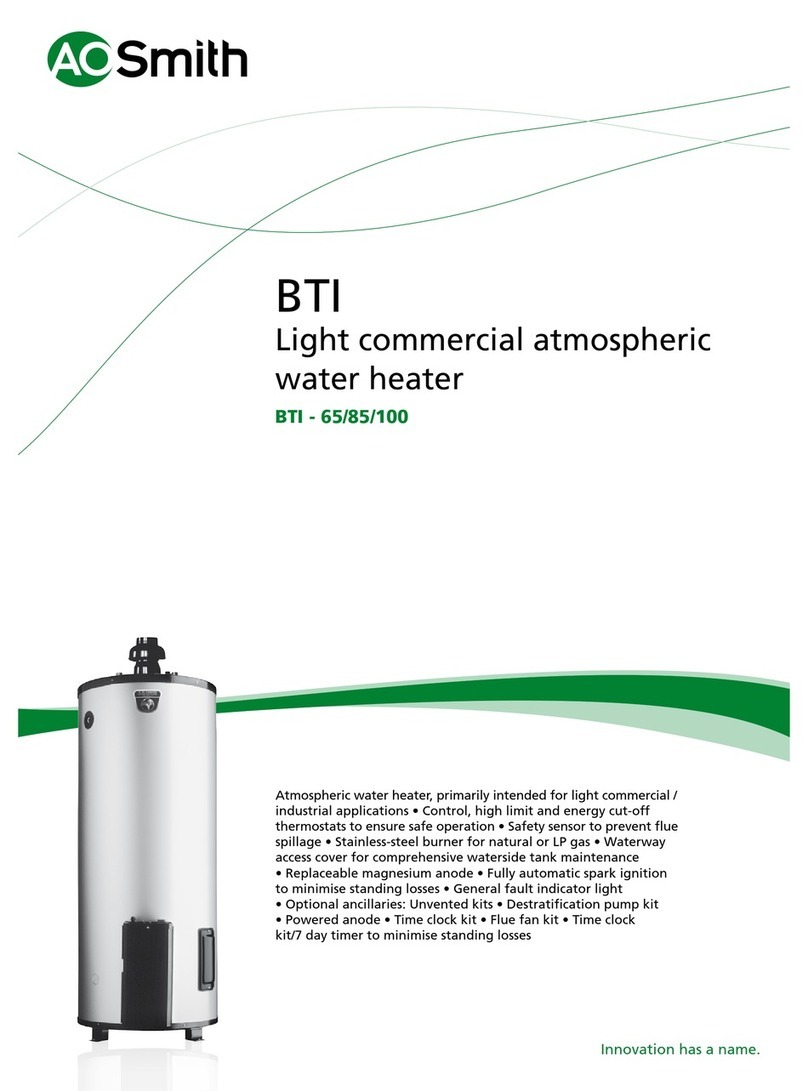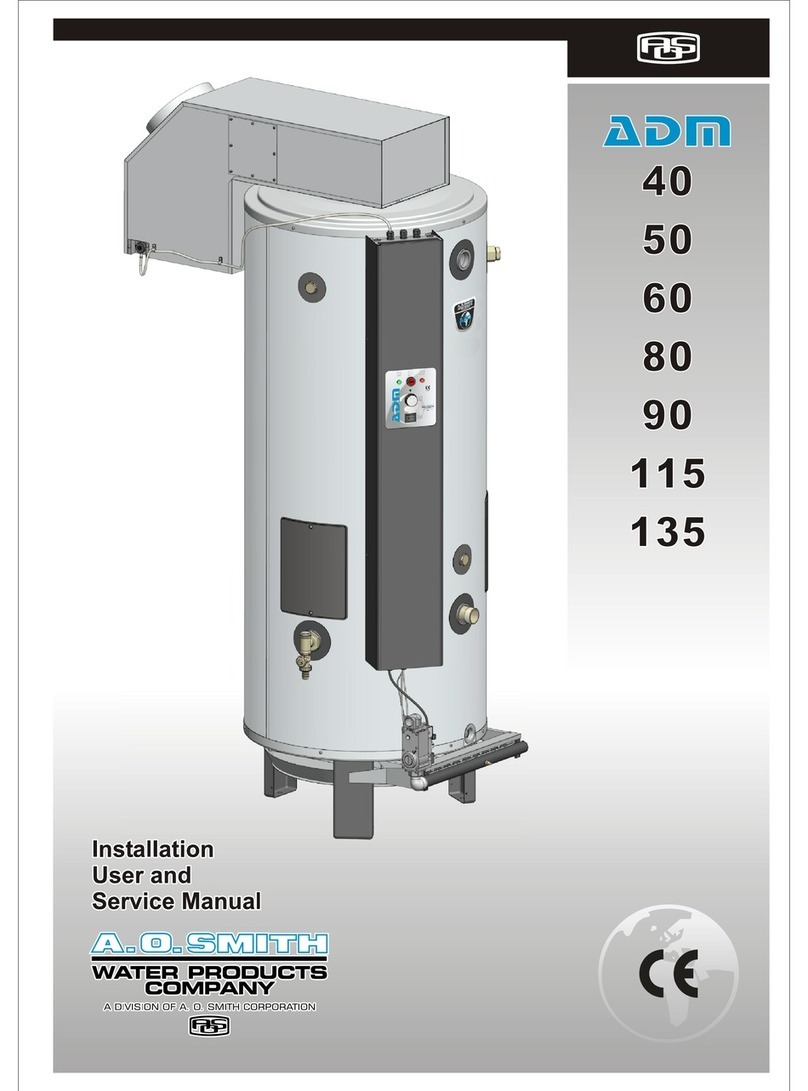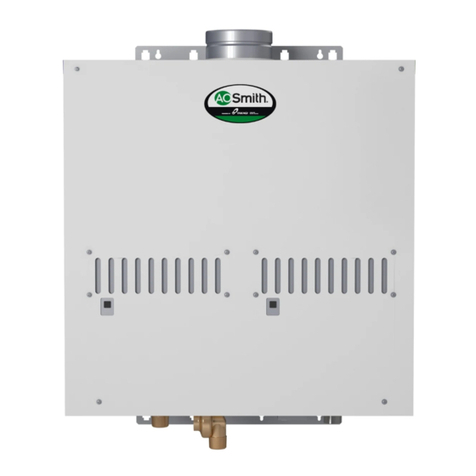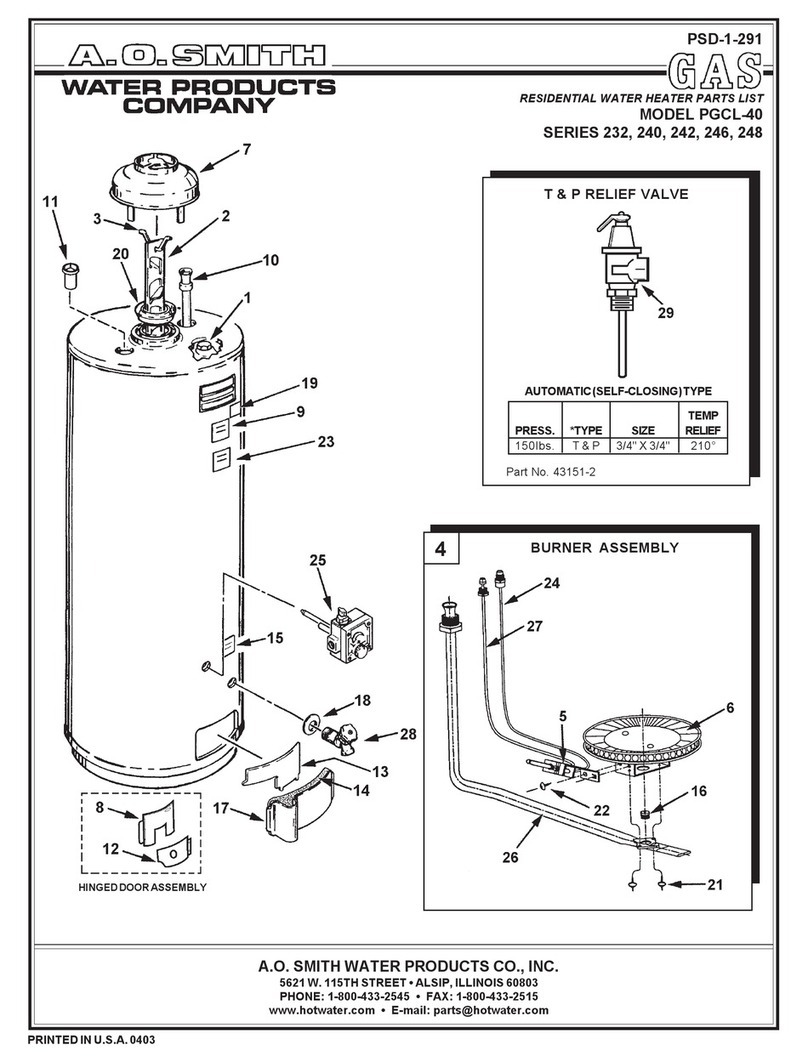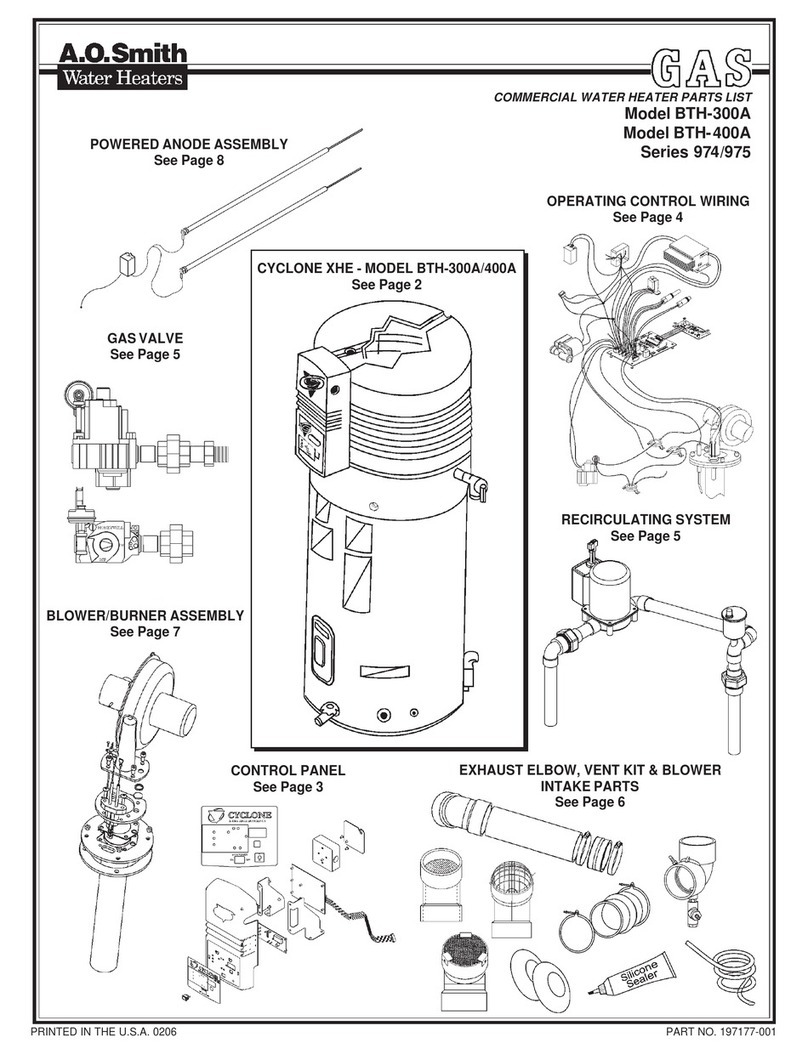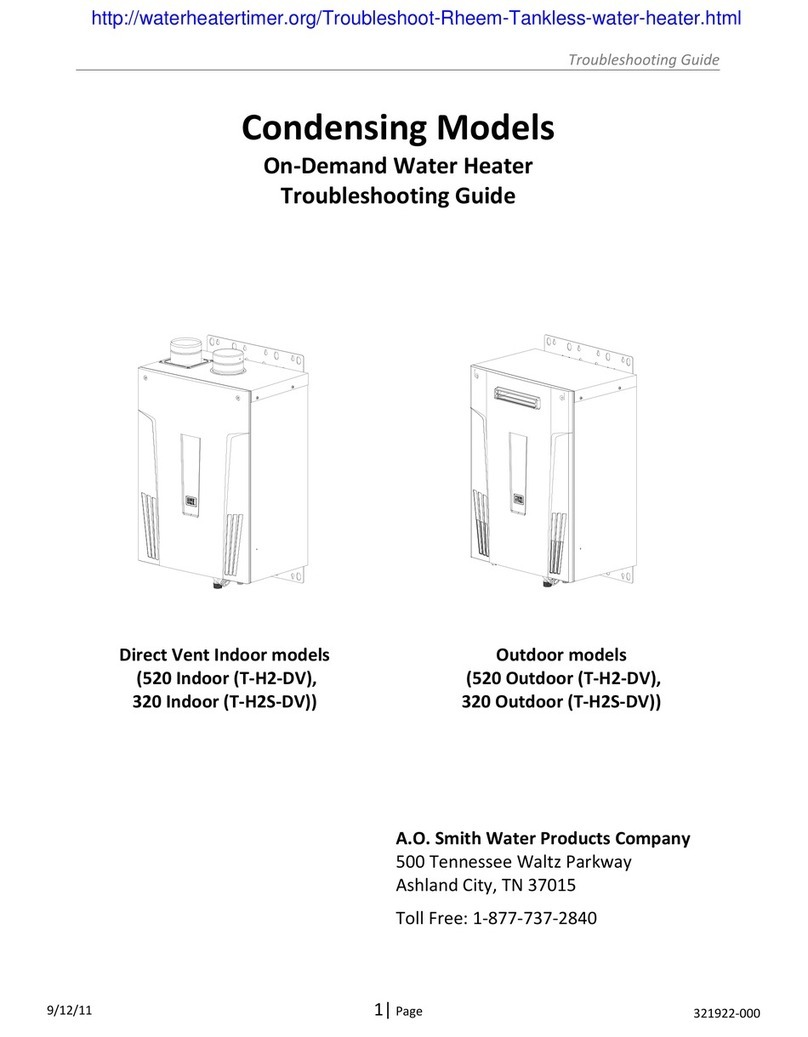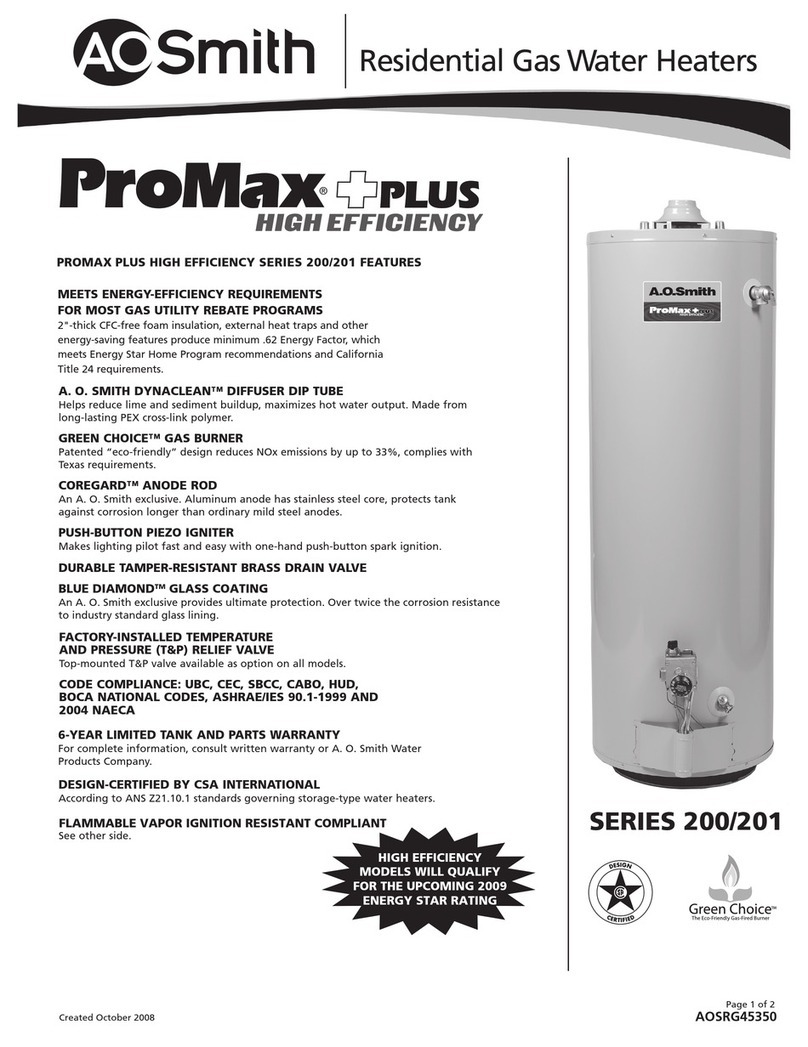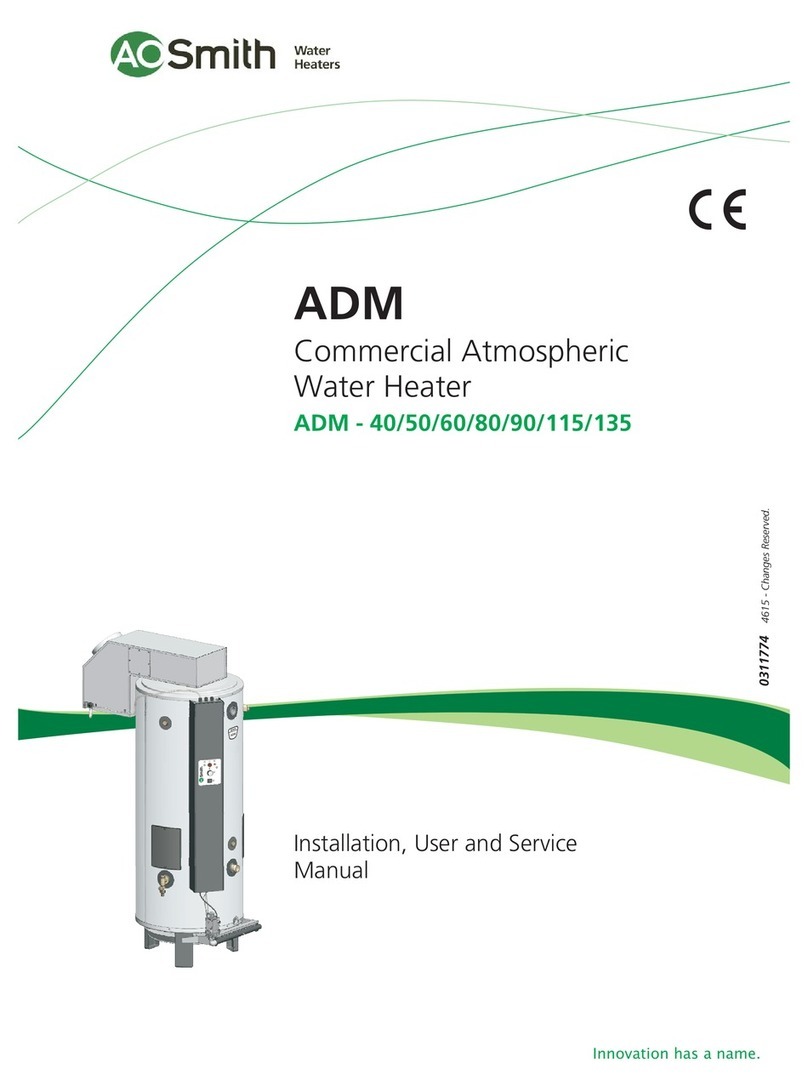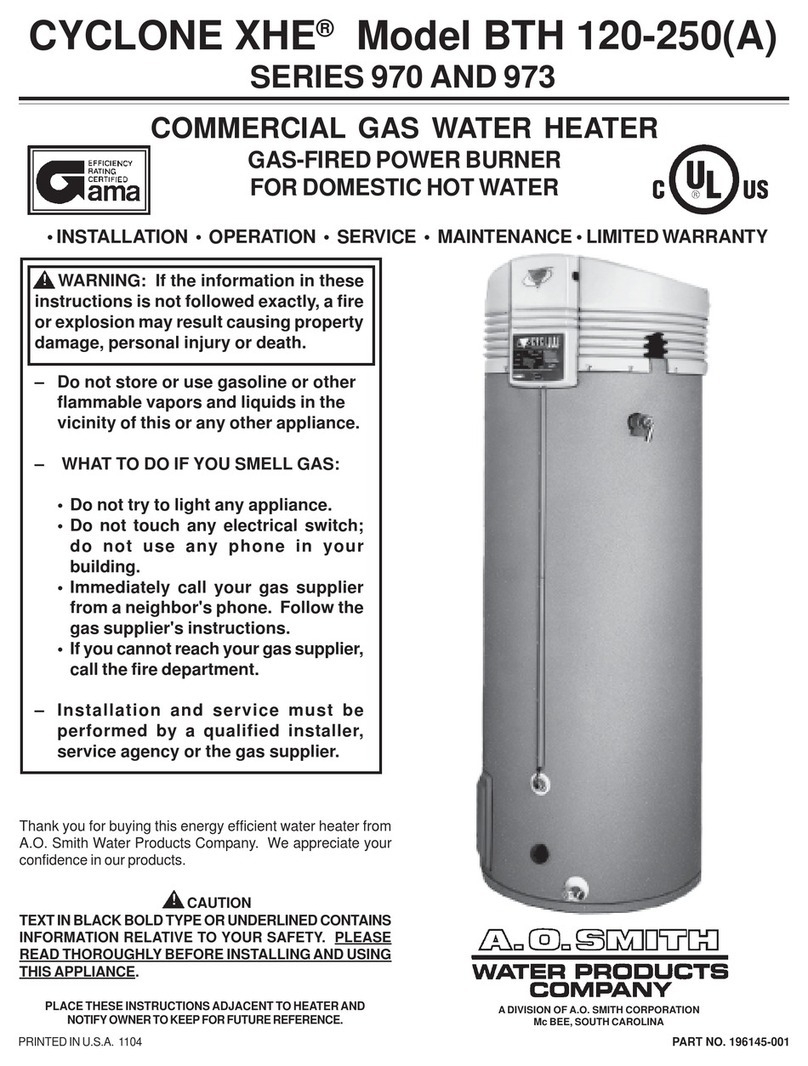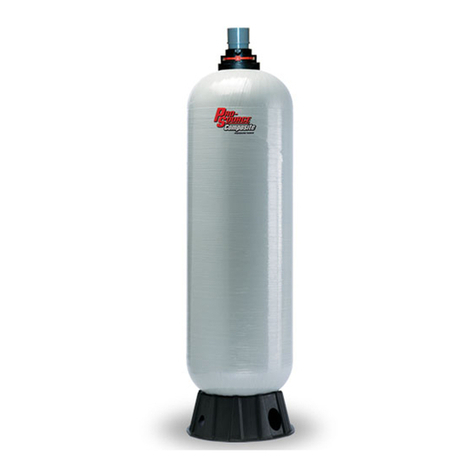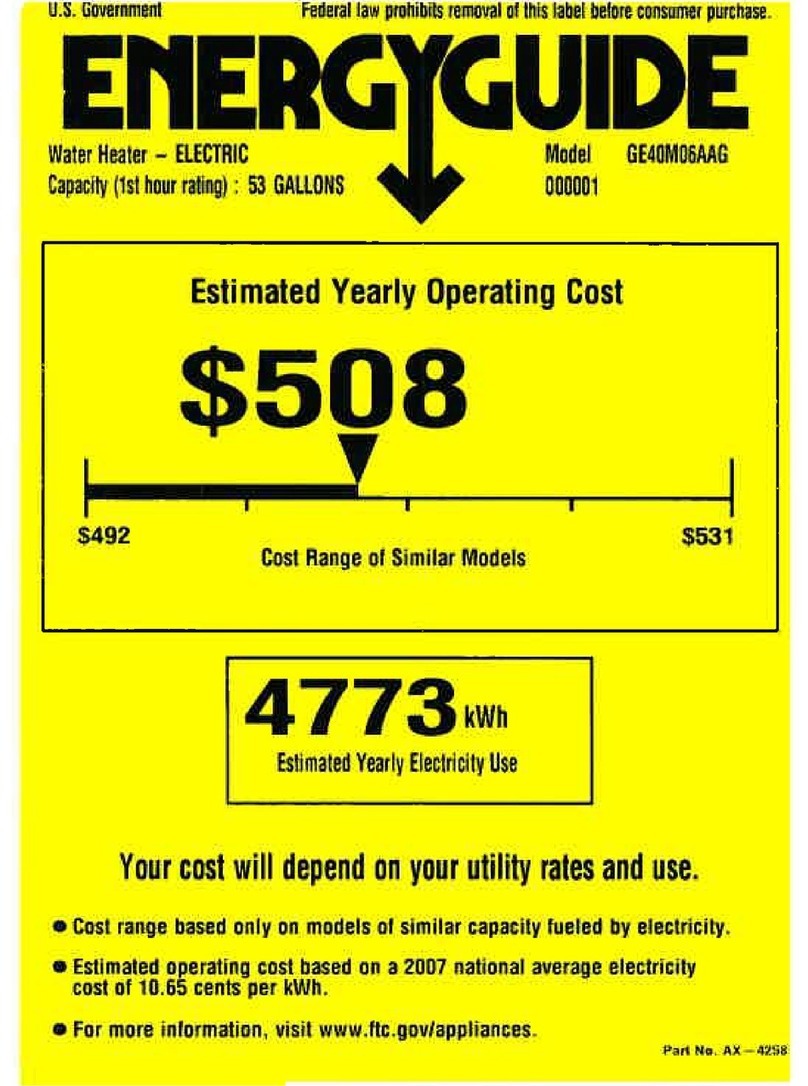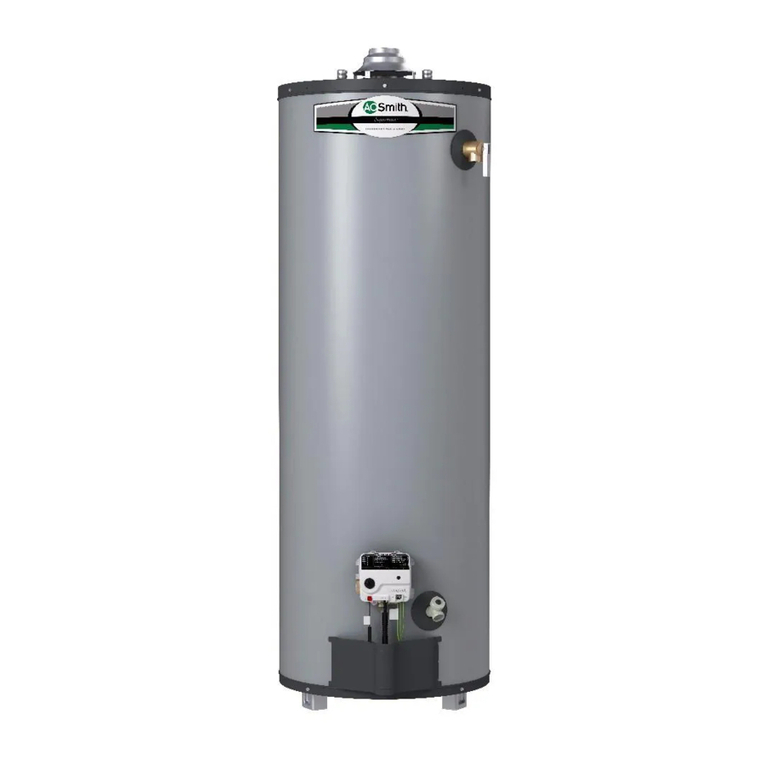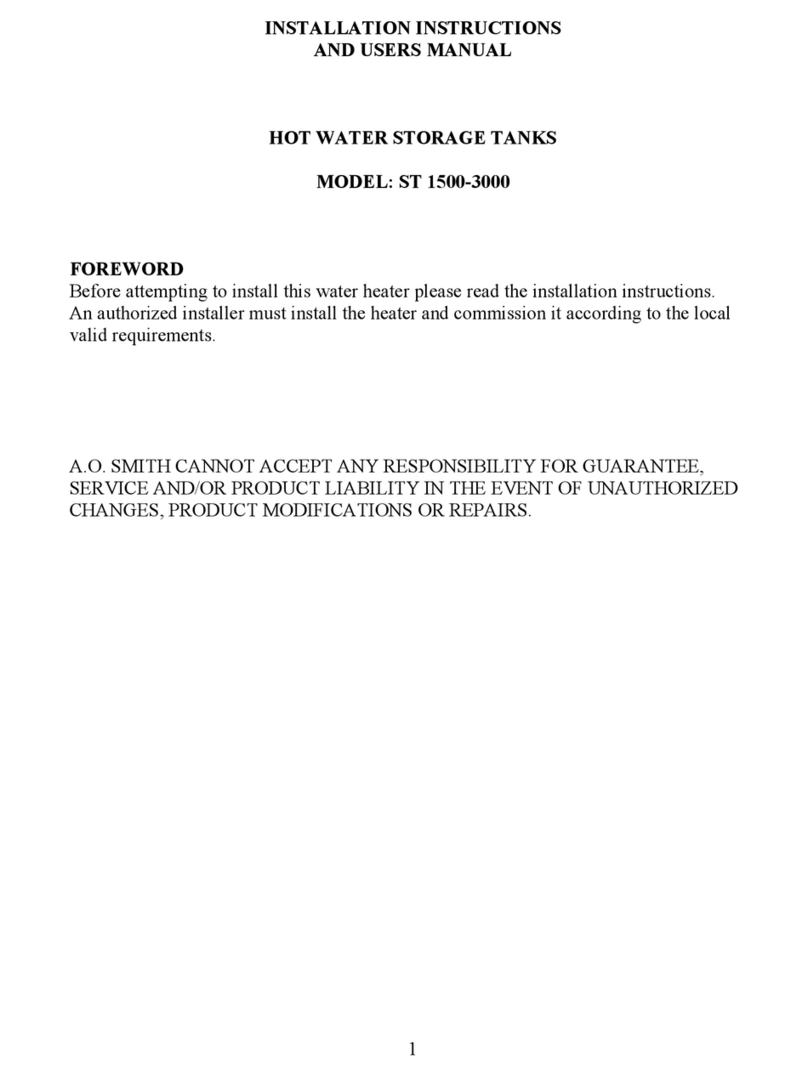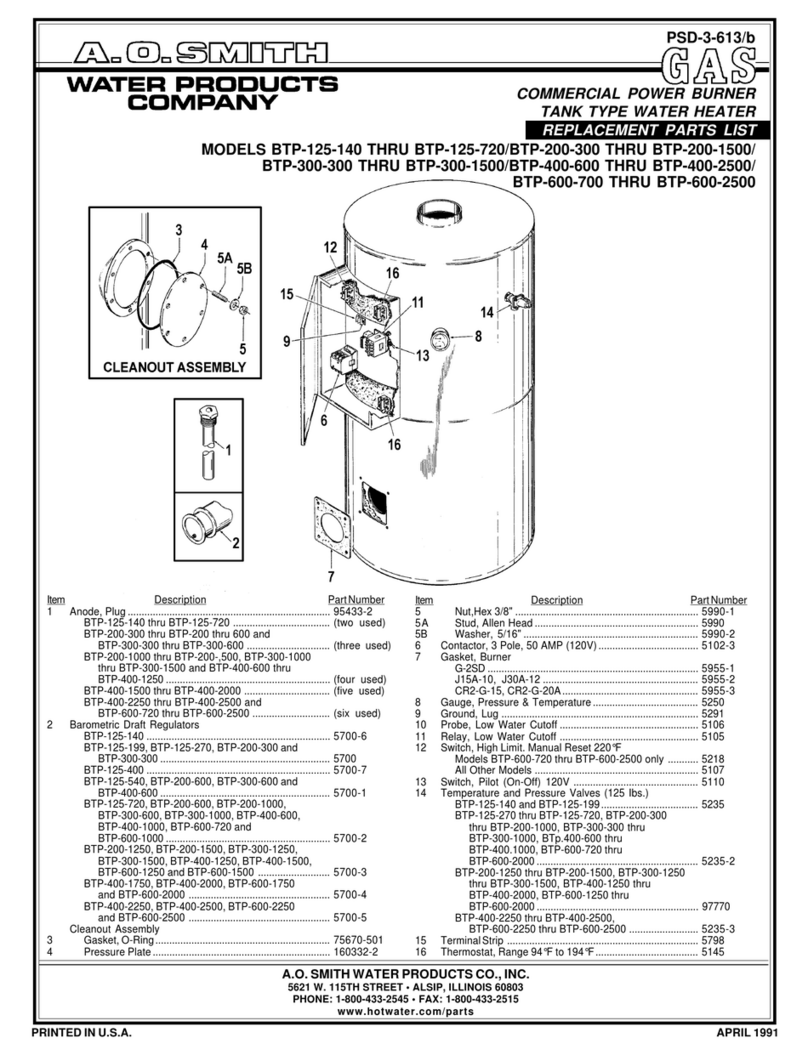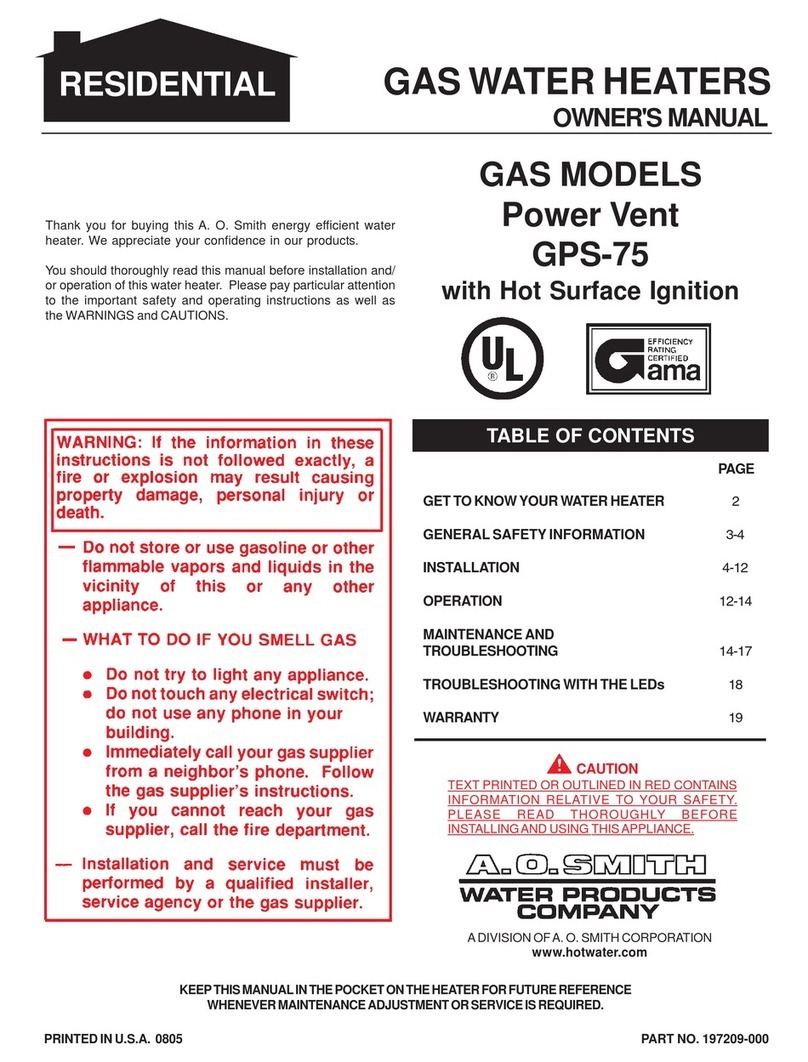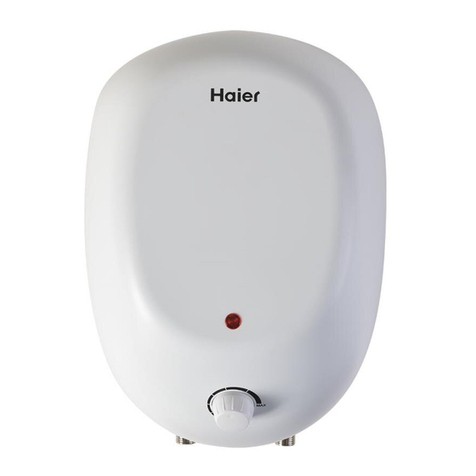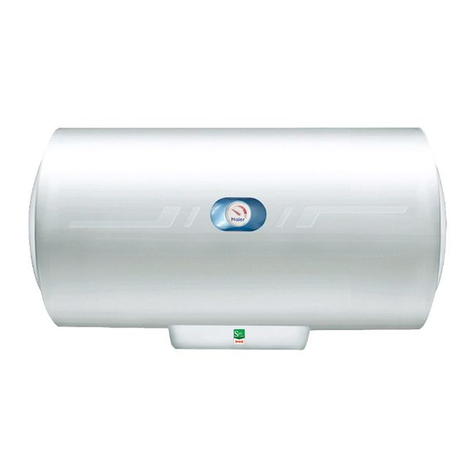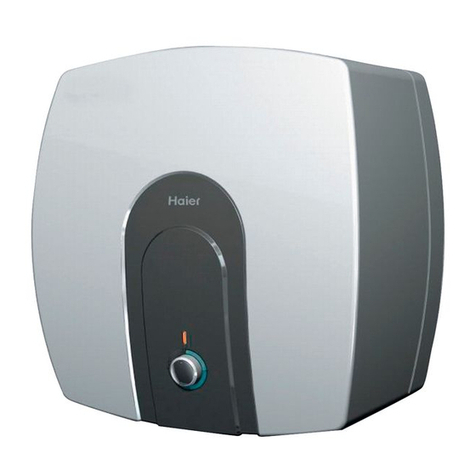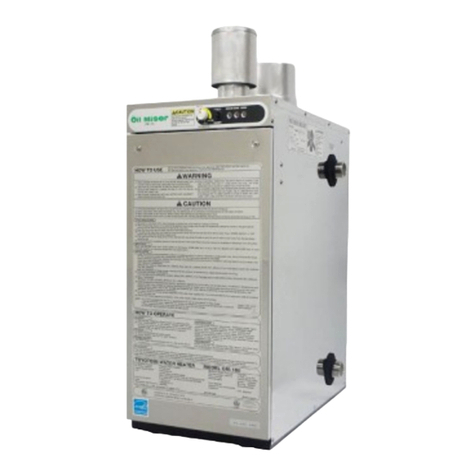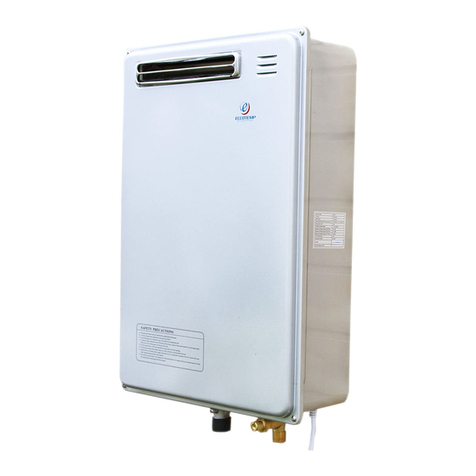
1010
1010
10
2A.SIZING GAS SUPPLY LINE (For single boiler installations and
forinstallations of multiplesof twoorthree of samesizeboilers).
Use table 6, or CAN/CSA B149.1-00 (latest recent edition) to size
iron pipe or equivalent gas supply line. Table 6 is based on a
pressure drop of 0.3 inches of water and a specific gravity of 0.60
approximately that of natural gas. (LP gas has an S.G. of about
1.53). If the service pressure is five inches water column or less,
useone pipe size largerthanspecified in table 6inorder to minimize
pressure drop in the line.
TABLE6
MAXIMUMCAPACITYOFPIPEINCUBIC FEETOFGAS PER
HOUR(BASED UPONAPRESSURE DROPOF0.3 INCHWATER
COLUMNAND0.6SPECIFICGRAVITY GAS)
Length
Meters
From Gas (Nominal Iron Pipe Size (Inches)
Meter 1/2 3/4 1 1 1/4 1 1/2 2 2 1/2 3 4
3 (10) 132 278 520 1,050 1,600 3,050 4,800 8,500 17,500
6 (20) 92 190 350 730 1,100 2,100 3,300 5,900 12,000
9 (30) 73 152 285 590 890 1,650 2,700 4,700 9,700
12 (40) 63 130 245 500 760 1,450 2,300 4,100 8,300
15 (50) 56 115 215 440 670 1,270 2,000 3,600 7,400
18 ((60) 50 105 195 400 610 1,150 1,850 3,250 6,800
21 (70) 46 96 180 370 560 1,050 1,700 3,000 6,200
24 (80) 43 90 170 350 530 990 1,600 2,800 5,800
27 (90) 40 84 160 320 490 930 1,500 2,600 5,400
30 (100) 38 79 150 305 460 870 1,400 2,500 5,100
38 (125) 34 72 130 275 410 780 1,250 2,200 4,500
45 (150) 31 64 120 250 380 710 1,130 2,000 4,100
53 (175) 28 59 110 225 350 650 1,050 1,850 3,800
60 (200) 26 55 100 210 320 610 980 1,700 3,500
*The heating value of Natural Gas is approximately 1,050 Btu/Ft.3.
Propane (LP) Gas has a heating value of approximately 2,500 Btu/Ft3.
1 cu. meter=35.31 cu. feet.
Where it is necessary to use more than the average number of
pipe fittings i.e. elbows, tees, and valves in gas supply line, use a
pipe larger than specified to compensate for increased pressure
drop.
2B. SIZING GAS SUPPLY LINE (For multiples of over three boilers
of same size or for multiple installations of two or more mixed
sizes).
Capacities in cubic feet per hour of 0.60 specific gravity gas for
different sizes and lengths are shown in table 6. No additional
allowance is necessary for an ordinary number of fittings.
Applications of the gravity factor converts the figures given in table
6 to capacities with another gas of different specific gravity. Such
application is accomplished by multiplying the capacities given in
table 6 by the multipliers shown in table 7.
To determine the size of each section of gas piping in a system
within the range of table 6 proceed as follows:
•Determine the gas demand of each appliance to be attached
to the piping system. When table 6 is to be used to select the
piping size, calculate the gas demand in terms of cubic feet per
hour for each piping system outlet. The gas demand for an
appliance can be found by dividing its heat input rate by the
gas’s heating value.
• Obtain or determine the length of piping from the gas meter or
service regulator to the appliance(s).
ITISIMPORTANTTOGUARDAGAINSTGASVALVEFOULINGFROM
CONTAMINANTSINTHEGASWAYS. SUCHFOULINGMAYCAUSE
IMPROPEROPERATION, FIRE OR EXPLOSION.
IF COPPER SUPPLY LINES ARE USED THEY MUST BE
CERTIFIEDFORGAS SERVICE.
BEFORE ATTACHING THE GAS LINE BE SURE THAT ALL GAS
PIPE IS CLEAN ON THE INSIDE.
TOTRAPANYDIRTORFOREIGNMATERIALINTHE GASSUPPLY
LINE, A DIRT LEG (SOMETIMES CALLED DRIP LEG or sediment
trap) MUST BE INCORPORATED IN THE PIPING, SEE FIG. 1. The
dirt leg must be readily accessible and not subject to freezing
conditions. INSTALL IN ACCORDANCE WITH
RECOMMENDATIONS OF SERVING GAS SUPPLIERS. (Refer to
National Fuel Gas Code, ANSI Z223.1 and/or
CAN/CSA-B 149.1-00 Installation Codes.
To prevent damage, care must be taken not to apply too much
torque when attaching gas supply pipe to gas valve gas inlet.
Fittings and unions in the gas line must be metal to metal type.
Apply joint compounds (pipe dope) sparingly and only to the male
threads of pipe joints. Do not apply compound to the first two
threads. Use compounds resistant to the action of liquefied
petroleum gases.
THE BOILER AND ITS GAS CONNECTIONS MUST BE LEAK
TESTED BEFORE PLACING THE BOILER IN OPERATION. Use
soap and water solution or other material acceptable for the
purposeinlocatinggasleaks. DONOTUSE MATCHES,CANDLES,
FLAMEOROTHERSOURCESOFIGNITIONFORTHISPURPOSE.
DISCONNECT THE BOILER AND ITS MAIN MANUAL GAS
SHUTOFF VALVE FROM THE GAS SUPPLY PIPING SYSTEM
DURING ANY PRESSURE TESTING OF THE GAS SUPPLY
SYSTEMOVER 1/2 PSIG(3.5kPa).. THEGASSUPPLYLINEMUST
BE CAPPED WHEN NOT CONNECTED TO THE BOILER.
THE BOILER MUST BE ISOLATED FROM THE GAS SUPPLY
PIPINGSYSTEM BY CLOSING ITSMAINMANUALGASSHUTOFF
VALVEDURINGANYPRESSURETESTING OFTHEGASSUPPLY
PIPING SYSTEM AT TEST PRESSURES EQUAL TO OR LESS
THAN 1/2 PSIG (3.5kPa).
PURGING
Gas line purging is required with new piping or systems in which
air has entered.
CAUTION
PURGING SHOULD BE PERFORMED BY PERSONS
EXPERIENCEDIN THISTYPEGAS SERVICETOAVOID RISKOF
FIREOR EXPLOSION. PURGE DISCHARGEMUSTNOT ENTER
CONFINEDAREASOR SPACESWHEREIGNITIONCANOCCUR.
THEAREAMUSTBEWELLVENTILATEDANDALLSOURCES OF
IGNITIONMUSTBEINACTIVATEDORREMOVED.
1. CORRECTGAS
Make sure the gas on which the boiler will operate is the same as
that specified on the boiler rating plate. Do not install the boiler if
equipped for a different type gas — consult your supplier.
